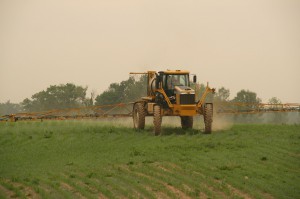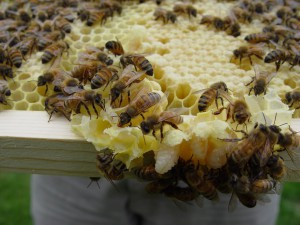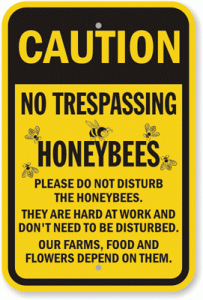Protecting honey bees and humans

Sure, they look a little scary: But we’re the ones typically threatening the honey bee. (Photo via www.public-domain-image.com.)
We may be the ones who flail and flee when a honey bee comes humming around our picnic table, but their threatened state could present risks for all of us.
Honey bees are the prime pollinator of agricultural crops in the U.S., including almonds, cranberries, blueberries, avocados, apples, cherries and pears. Their contribution generates $16 billion to $19 billion in “new wealth” each growing season, according to a study from Cornell University.
But the numbers and vitality of honey bee colonies have been in decline since 2006, and many advocacy groups argue that’s due, in large part, to the extensive use of pesticides clothianidin and thiamethoxam. These chemicals, which are absorbed by plants, making them toxic to insects, became heavily used in the mid-2000s, coinciding with beekeepers’ reports of widespread colony losses.

Pesticides used on crops such as corn can have dire consequences for honey bees. (Photo from Pl77, via Creative Commons.)
As a result of honey bee shortages, honey prices have been on the rise – reaching a record high in 2012 at 195.1 cents per pound, according to the USDA’s annual bee and honey survey. And some say the effects could extend to food prices, if farmers struggle to supplement the pollination.
While the European Commission recently proposed a ban on using neonicotinoids on many crops – after the European Food Safety Authority determined the chemicals posed an acute risk to honey bee health, the U.S. EPA has not issued any restrictions, and was handed a lawsuit last week by a coalition of beekeepers and environmental and consumer groups.
While advocacy groups are encouraging farmers to seek other ways to protect their crops and work with local beekeepers to protect their colonies, they’re also promoting small-scale and “backyard” beekeeping as a viable method for combating the bee shortage. About 80 percent of the registered beekeepers in Pennsylvania, for example, are considered hobbyists, with 10 or fewer colonies according to Pennsylvania State Beekeeping Association Vice President Charlie Vorisek.

A beekeeper shows off the larvae and honey from one of his hives. (Photo by mazaletel, via Creative Commons.)
So what can you do? Here are a few ways to protect humans and honey bees in your neighborhood.
- If you keep bees, talk with your neighbors. Explain the important role they play in pollination and the dangers that pesticides present. Ask them to inform you when they plan to apply pesticides, so that you can move your hives or cover them with wet burlap, recommends Clemson University’s Department of Pesticide Regulation.
- If you are a beekeeper, explain to neighbors, family and friends that honey bees only pose a threat of attack when the hive is threatened. In addition, use yard signs to communicate the message when you’re not there.
- Make sure to provide a water source for your bees, which will deter them from seeking water in a neighbor’s yard.
- Establish a “bait hive” nearby: In case of a swarm, it could attract the bees and discourage them from leaving your property.
- Bees can travel up to five miles to collect pollen. Even if you don’t keep bees, avoid applying any bee-toxic pesticides on blooming plants that they’ll find attractive. While neonicotinoids are routinely used on more than 100 million acres of corn, wheat, soy and cotton, they are also used in some home gardening products. Clemson University’s Department of Pesticide Regulation has generated a list of highly toxic to relatively non-toxic pesticides.
Category: News















